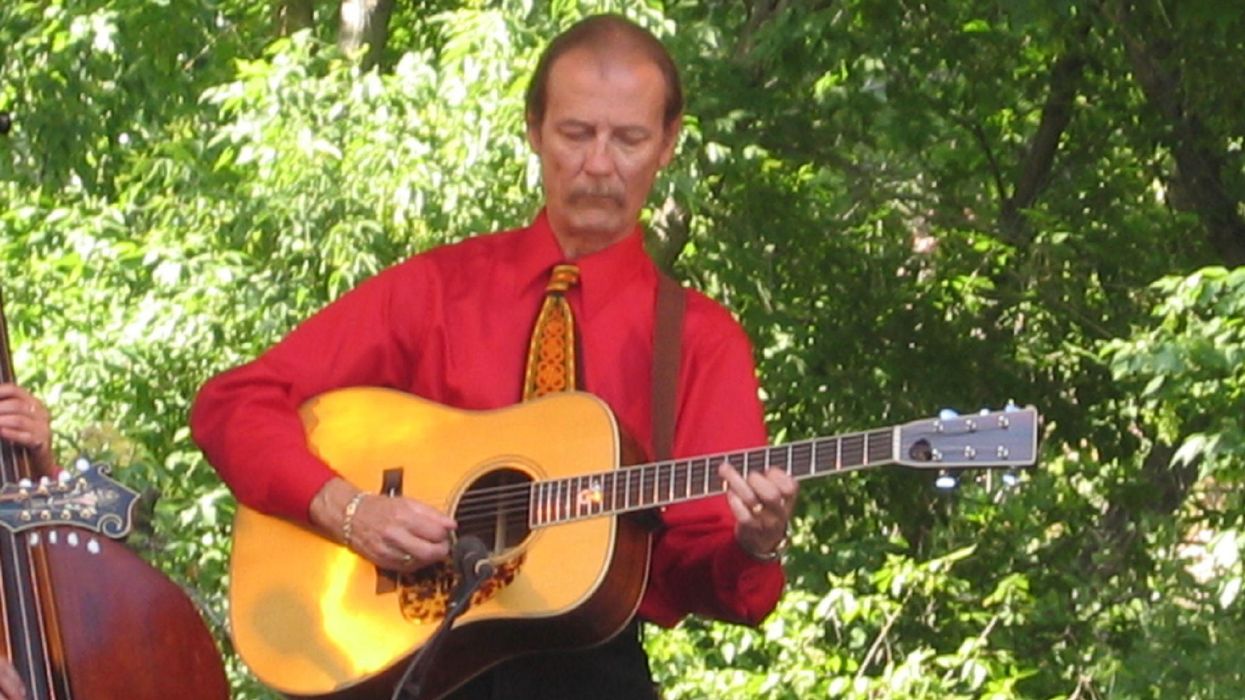Acoustic guitar fingerstylist Yasmin Williams had a wide breadth of musical influences growing up in Washington D.C. Everything from go-go funk to Jimi Hendrix to Nirvana to hip-hop inspired her to pick up an electric guitar, and that amalgamation of styles remains the bedrock of the music she makes. But it's how she translates it all through her acoustic guitar, kora, kalimba, and a pair of tap shoes that makes the 24-year-old's latest release, Urban Driftwood, so captivating.
It also raises a question: How does one go from bashing out Nirvana songs to becoming one of the fastest-rising stars in fingerstyle guitar?
"I wanted to branch off and write my own music," Williams says. "But I felt like the electric guitar was a bit limiting, especially with the percussive stuff I wanted to do. And once I figured out how to do fingerstyle, it was a lot easier for me to write my own tunes. I think the first song I learned was 'Blackbird,' by the Beatles. That pushed fingerstyle into my brain. I fell in love with it.
"But I've always written instrumental music, simply because that's what I'm comfortable with. Even when I listen to music in general, I don't necessarily care about the lyrics most of the time. It's always the instrumentation and arrangements that get me to listen to a track."
Sunshowers
Since the day in May 2018 that Unwind, her debut album, dropped, Williams's acoustic instrumental wizardry and tapestry of influences has been on full display, with her impeccable technique and unique take on fretboard tapping demanding attention.
Inhibited by the bulk of some acoustic-guitar bodies, Williams decided to approach tapping by laying her 6-string horizontally on her lap. This is much more comfortable for her, and offers better access to the whole fretboard, laying it out more like a piano than a guitar. It's just one way Williams expands her musical dialect with a non-traditional approach. It wasn't long after the release of Unwind that Williams started to gain a reputation as an innovator. And, as innovators often do, she already had her eye on something new.
"For Unwind, there wasn't much of a theme," she says. "It was more like a collection of songs I'd written from late high school to the end of college. Whereas Urban Driftwood is definitely about something. It has a theme and an arc to it." In the album's liner notes, Williams explains that all of the songs were written during the COVID-19 pandemic, and that the lockdown and the rise of the Black Lives Matter movement in the wake of George Floyd's killing is reflected in the unfolding of its sequence. She also sought to craft a sonic landscape that communicates a feeling of movement and the natural beauty that persists in urban spaces.
"It is a solo guitar, so the tone has to be on point. I can't have a muddy bass or a buzzing treble."
"It's my first project that shows where I'm from and pays homage to my roots," she continues. "And it was an extremely different process than how I recorded my first album. Since I had already released a 'guitar' album, I didn't want to release another one. I wanted to show my composition skills and show I've grown as a songwriter, composer, guitarist, and musician. That was a huge goal."
She aced it. Urban Driftwood is audibly a step forward—not only in the excellence and emotional depth of its playing, but for her inclusion of new sounds and musical colors. Partly, Williams accomplished this by including guest musicians. Amadou Kouyate, for example, adds djembe to the title track and "Adrift." The latter also features cellist Taryn Wood, and she and Williams create an adventurous topography of melodies that repeatedly interlock and veer apart.
"'Adrift' was me sharpening my composition tools and writing something with counterpoint in mind. It's almost like a fugue. I wrote that song to see if I could write a duet for guitar and another instrument. I thought it came out great and was a good fit with the theme of the album, so I included it."
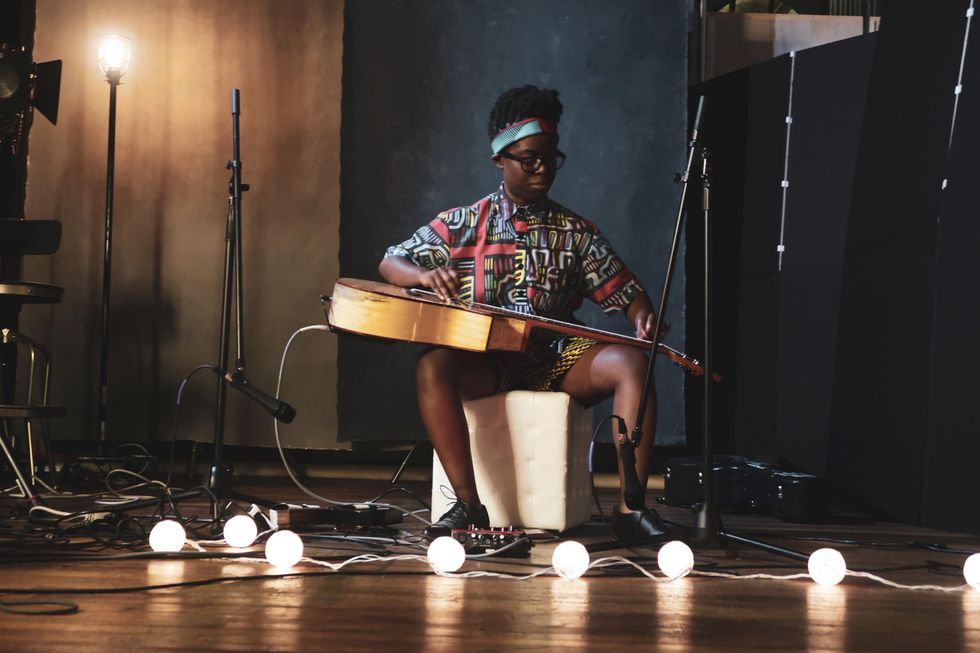
To give her complete access to the fretboard while tapping, Williams has created her own lap-style approach to playing acoustic. Here, she's weaving a melody on her custom Skytop.
Photo by Umbar Kassa
Like "Adrift," much of Williams' music is carefully calculated. Her debut album was planned to precision before she entered the studio. But Urban Driftwood producer/engineer Jeff Gruber wanted Williams to take a different approach—to open her mind to new influences and new recording techniques. "Jeff got me to open up, in terms of not having to have everything finished before I get into the studio," Williams says. "Being able to experiment while recording was not something I was open to at all. I'm definitely a perfectionist. I want everything already figured out and finished. He showed me that it's okay if it's not. Great things will come out of experimentation, trial and error, and trying different techniques.
"Like, usually I use a looper pedal. And that's what I wanted to do on 'After the Storm.' I thought overdubbing and slicing things was cheating. I don't know why I thought that. It made things way harder than they needed to be. But that's how I wanted to do things. But there are four guitar parts in 'After the Storm.' Thankfully Jeff convinced me that it would sound better if I recorded each guitar part separately."
Put on Urban Driftwood with a good set of headphones and you'll understand what Gruber was after. The broad aural spectrum gives the impression you're sitting in the middle of an acoustic guitar orchestra. But now Williams has to reproduce that onstage. "Unfortunately, I didn't think about that before going into the studio," she says, laughing. "It's extremely hard, especially since my songs are already so technical. But I don't want the live performance to affect the studio recording. Thankfully, I can play most of the songs on the album myself now. Like 'Swift Breeze'—I figured out a way to play it live with the looper pedal. But I definitely will have to use backing tracks on some songs, because the parts are instruments that I don't play."
Yasmin Williams Gear
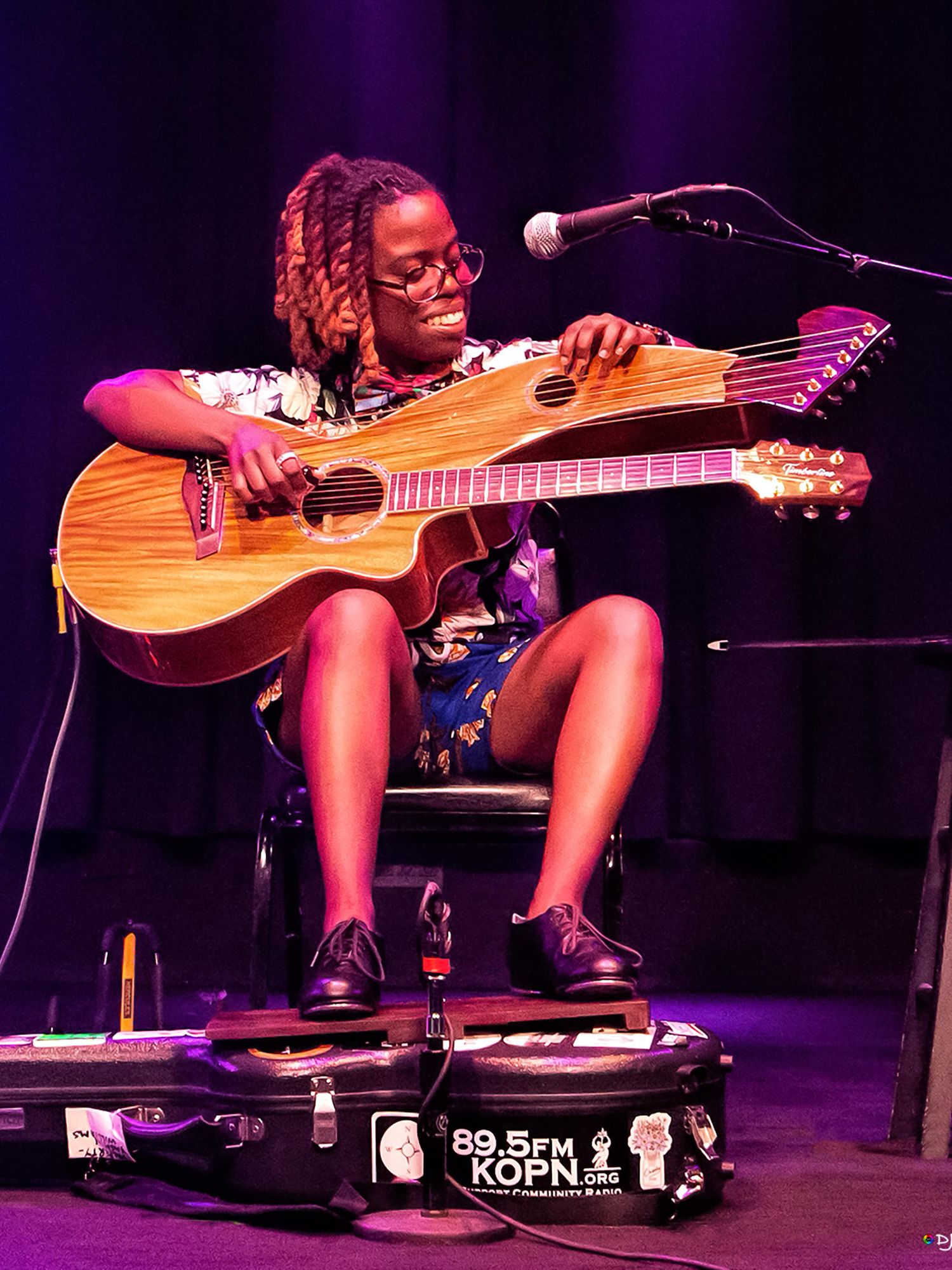
With its considerable overdubs, the material on Urban Driftwood is challenging to perform live. But with backing tracks and a deep reservoir of technique, Yasmin Williams rises to the task.
Photo by Jan Anderson
Guitars
- Custom Skytop acoustic with James May Ultra Tonic pickups
- Timberline acoustic parlor harp model with K&K pickups
- Sublime Guitar Company acoustic
Strings, Picks, and Accessories
- Shubb capos
- Calton guitar cases
- D'Addario Humidipaks
- GHS Silk and Steel string sets (.011–.048)
- Black Mountain thumbpicks
Effects
- Audio Sprockets ToneDexter
- Strymon BigSky
- Pigtronix Infinity Looper
- Joyo volume pedal
- Hologram Electronics Microcosm
- TC Electronic PolyTune
- Looptimus foot controller (for triggering backing tracks)
- Tap shoes
It's easy to get caught up in the songs and sounds of Urban Driftwood and miss the technical aspect of William's playing. It all seems so natural and seamless. But, watching her perform, you'll see her effortlessly whip through fast tapping passages, explore expansive chords, and reposition her guitar from conventional positioning to her lap for tapping, mid-song, without missing a beat.
"I have to practice that a little bit," Williams admits. "Especially for 'Juvenescence.' That switch is rather difficult because I only give myself a beat to do it. There's a lot of thought put into it. It's like, 'Okay, I'll play a harmonic here, give myself a rest, or something.' Usually, I don't give myself long because it will mess up the continuous motion of the song."
Williams' playing technique is just the tip of the iceberg. She's also known for incorporating additional instruments into her songs, and, in fact, her simultaneous guitar/kalimba performances are one of her trademarks. "I had always liked Maurice White's playing, especially on Earth, Wind & Fire's live versions of the song 'Kalimba Story,'" Williams explains. "Then one day I was writing a song and I wanted to add another timbre that guitar couldn't achieve. I was trying to think of instruments, and that kalimba sound kept popping into my head. I didn't realize it was the kalimba until I found one with no price tag in Guitar Center. I was like, 'That's the sound that I've been hearing! That's the Earth, Wind & Fire sound!' I've been using those ever since.
"Oh, and I use tap shoes, too," she adds, laughing. "Jeff had the two mics in stereo. One was on one shoe, and another mic was on the other, which I've never done before. He also added a plate reverb to it, which gave it the weird ping-pong delay in 'Through the Woods.' It blew my mind!"
Rig Rundown - Yasmin Williams
Thanks to Gruber's passion for capturing sonic detail, every instrument on Urban Driftwood has a beautiful dimensionality. "Jeff was huge on making everything sound spacious and lush," Williams says. "When I listened to it for the first time, I was shocked at how spacious and vibrant the guitar sounded. He didn't use a DI or anything. He used two or three mics on the guitar, close-miked, and that's it. He used pencil condenser mics."
Although this straightforward miking technique puts Williams' performances under a microscope, good luck finding a string buzz or flubbed note on the entire album. Not many players can perform with that level of precision. "I get irritated at myself if I hear any type of note inaccuracies or buzzing," she explains. "The only thing I can accept is [sliding] string sounds, because I like it and there's not much I can do about it. Other than that, I want it to sound as clear as possible. It is a solo guitar, so the tone has to be on point. I can't have a muddy bass or a buzzing treble. It has to be good. That's the standard I set for myself. I practice that a lot. Accuracy is extremely important."
Williams' touch and technique are vital to her tone but playing her beautiful custom Skytop acoustic guitar probably doesn't hurt, either. "The Skytop [tuned to open D] is its own story altogether," she says. "I really loved [Skytop luthier Eric Weigeshoff's] designs, how the guitars look, and the fact that they have the two huge side soundports instead of the one soundhole in the front. It sounds better to me, and it actually projects a lot better, which you may not expect. But because of my lap-tapping technique, his normal side ports can get muffled because they're facing my stomach. So since I do a lot of that tapping, he recommended this wood that had holes in the front called teredo-holed Sitka spruce. The holes are natural and made by mollusks, and I didn't care how it sounded! I just thought it looked cool. [Laughs.] It's like functional art. But those holes do help the sound project when I'm lap-tapping. It does a great job."
The Skytop is on every track on Urban Driftwood except "Adrift."
"I use my old Sublime guitar on that because it sounded better with the cello," Williams notes. Her other trademark instrument is her Timberline harp guitar. In addition to its standard 6-string layout, this parlor-size instrument features six lower-octave strings, tuned in open G. Staying true to her pragmatic approach to technique, Williams prefers plucking the lower strings by reaching over the top of the guitar and picking with her fretting hand. It took some work to master, but the harp guitar is now an indispensable tool in her sonic arsenal.
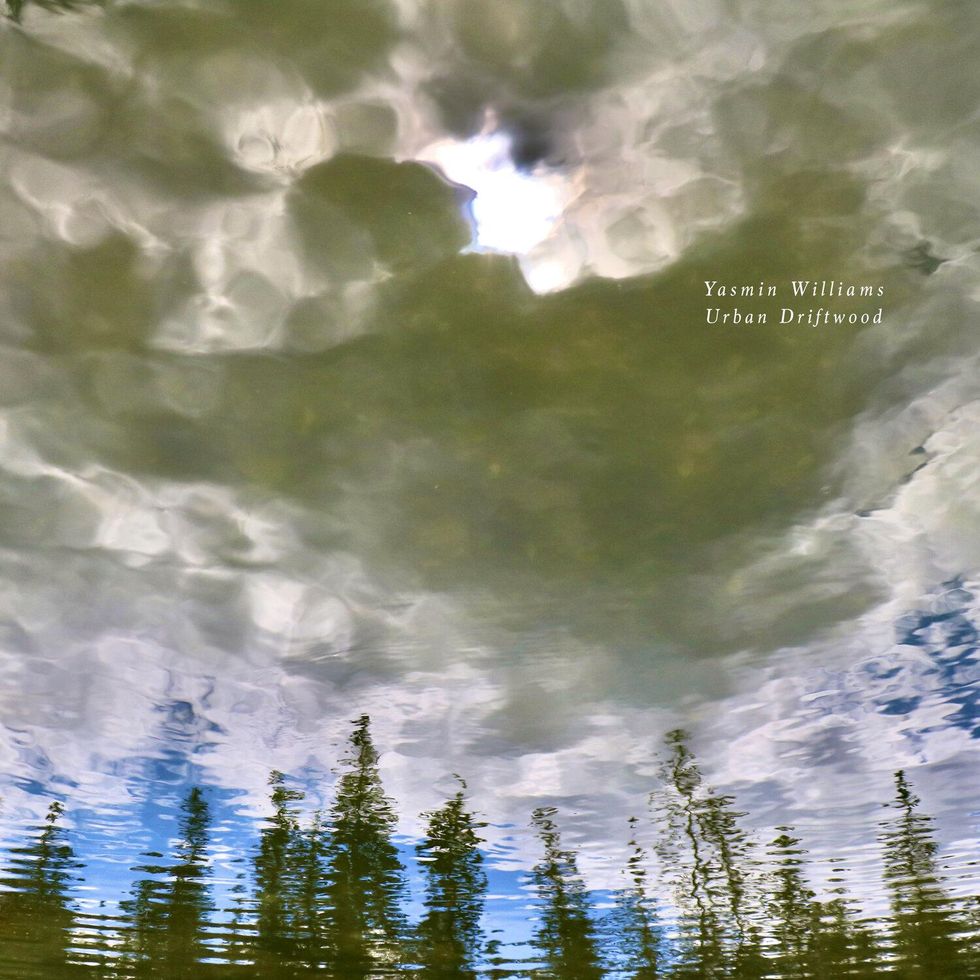
TIDBIT: Producer Jeff Gruber was Williams' studio guru for her latest album, Urban Driftwood, urging her to experiment with overdubs and capturing every sound in pristine detail.
"I'd wanted a harp guitar for a while, but it always seemed intimidating because of the extra set of sub-bass strings. It's actually not, once you get the hang of playing it. It just has a whole other dimension. I use it on 'Swift Breeze' to play the super-fast tapping part. And I also use the harp guitar on 'Jarabi.'"
Regardless of which guitar Williams plays, she has a beautiful, natural-sounding tone, even when plugged in. But she's not afraid to use pedals to get it. "Gear is very important to your tones, to everything, to how you play," she says. "If you find something that works for you, then use that. I'm getting into pedals more and experimenting with delays and reverbs and all that. I love to use them live and have a pedalboard. I have a Strymon BigSky, a Pigtronix Infinity Looper, and a cool Joyo volume pedal that's miniature, so it fits my foot well. And I got a new pedal by Hologram Electronics called a Microcosm, which is super cool. It's like a granular delay/micro-looper. It has stereo reverbs, too. I also have a ToneDexter, which is important for my guitar tone live." That device uses Audio Sprockets' WaveMaps technology to create an optimized version of an acoustic guitar's voice.
For someone who gave up electric guitar for its tonal limitations, Williams is definitely becoming a pedal junkie. Is this part of another sonic evolution? "Oh, yes, for sure," she admits. "I'm playing electric way more than I have in a long time. My main instrument is still acoustic, but I think electric will pop up at a show or two in the future.
"Nowadays, I'm more aware that I'm in a unique spot in the guitar scene, and I'm not afraid of that anymore," Williams continues. "I'm actually enjoying writing music that includes percussive stuff that pays homage to D.C. or go-go music or West African music or whatever. I like putting something different into the guitar canon, if you want to call it that. That's the point of Urban Driftwood."
Yasmin Williams, “Juvenescence” | New York Guitar Festival sessions
Yasmin Williams performs "Juvenescence" at Dumbarton Oaks Park in Washington, D.C. Enjoy her beautiful, ringing tone and expressive technique, and watch, at 1:34, as she seamlessly transitions to her trademark lap-tapping without missing a beat.






![Devon Eisenbarger [Katy Perry] Rig Rundown](https://www.premierguitar.com/media-library/youtube.jpg?id=61774583&width=1245&height=700&quality=70&coordinates=0%2C0%2C0%2C0)








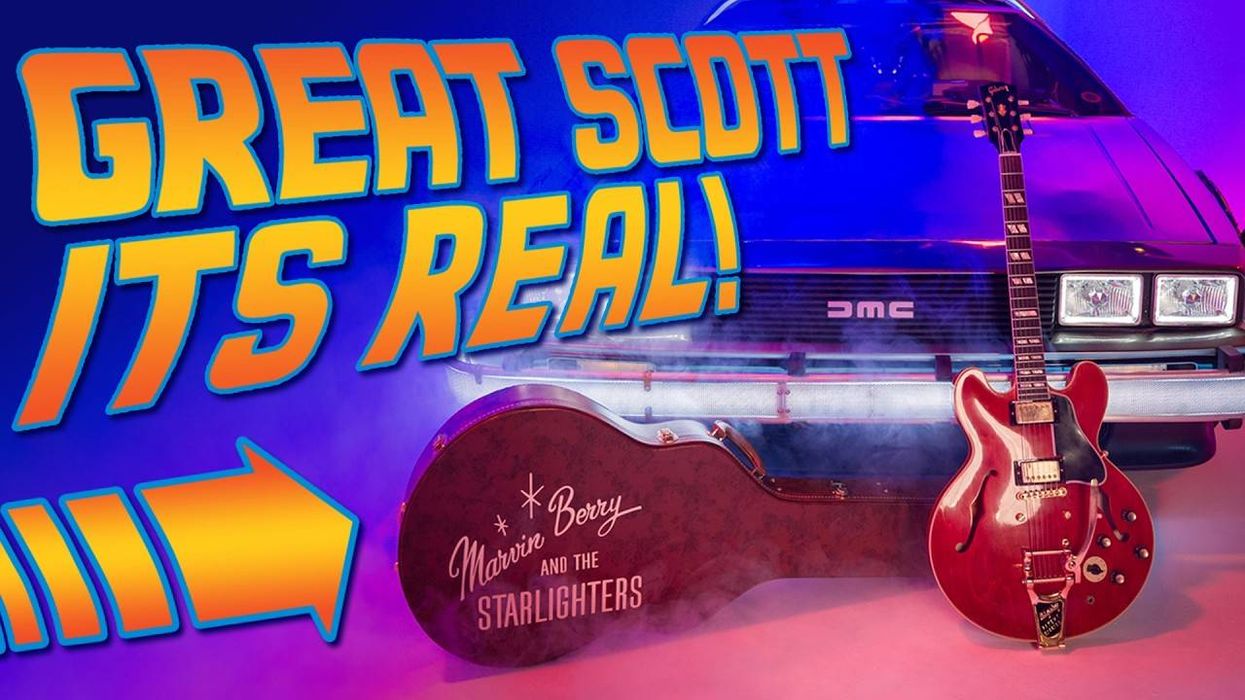

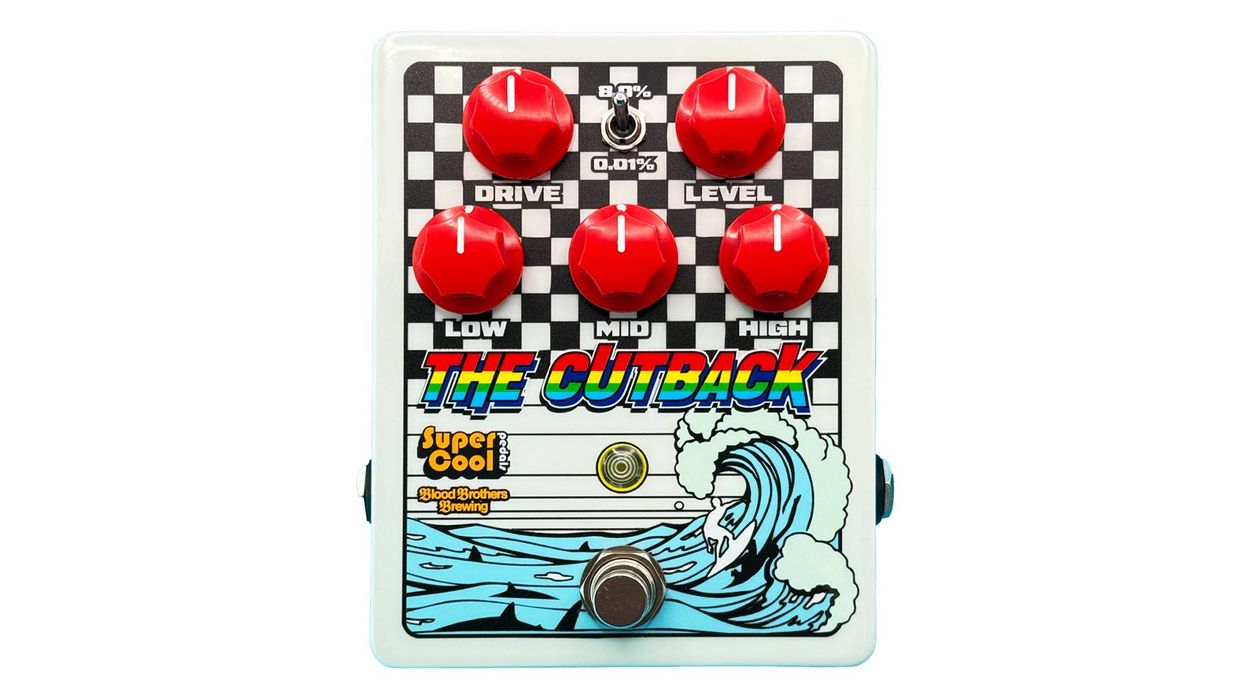
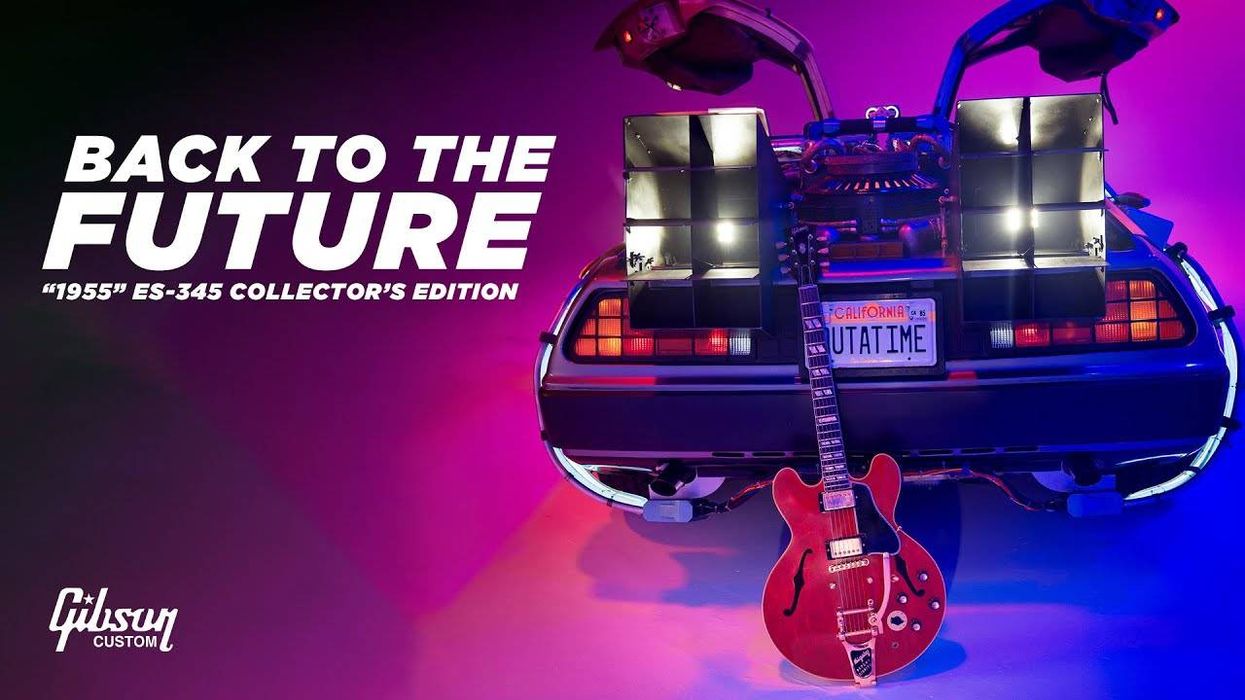
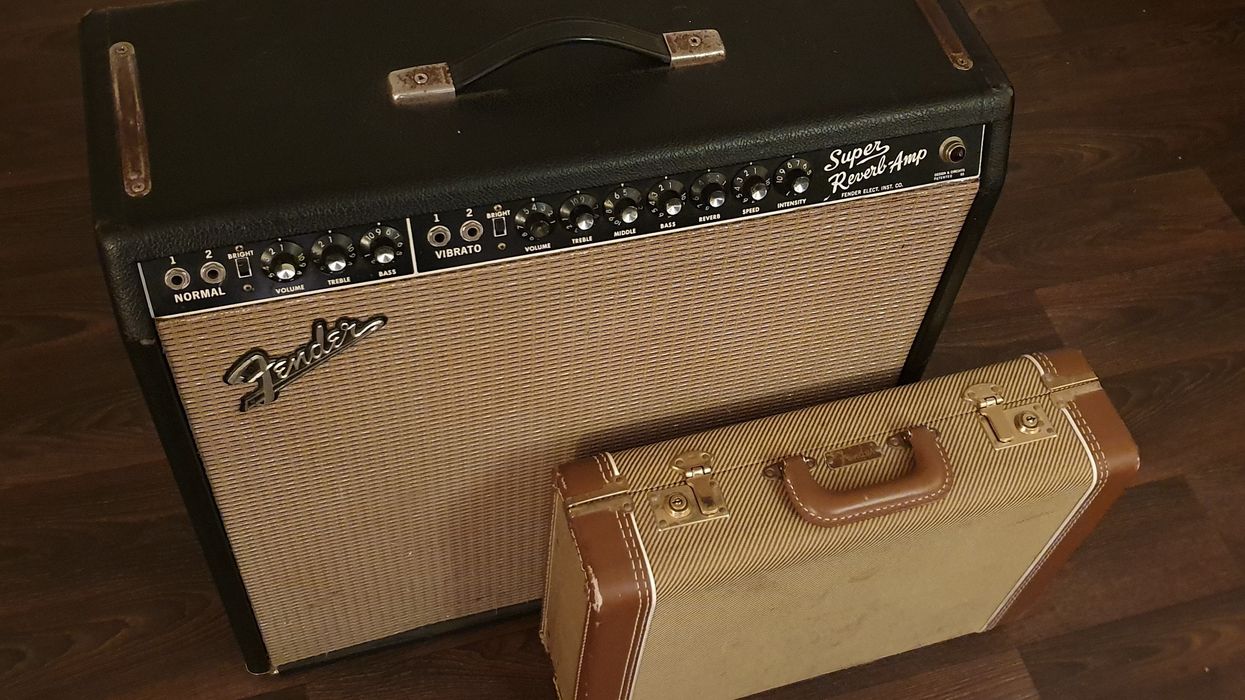

 Luis Munoz makes the catch.
Luis Munoz makes the catch.




































